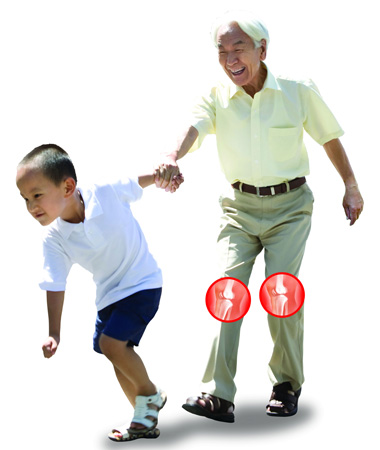Understanding Osteoarthritis

Who Gets Osteoarthritis and Why?
Osteoarthritis & Ageing
Incidences of osteoarthritis increase with age due to simple “wear and tear” on the joints – the older you are,
the more you have used them. However, that doesn’t mean osteoarthritis is an inevitable part of aging because
not everyone gets it.
Osteoarthritis & Obesity
Increased body weight, which adds stress to lower body joints, is a well-established factor in the development
of osteoarthritis. Your knees, which carry the brunt of your weight, are particularly at risk. For every pound
you gain, you add 4 pounds of pressure on your knees and six times the pressure on your hips. Gaining weight as
you head toward middle age can increase the likelihood of developing osteoarthritis.
Losing weight, even just 10 pounds (4.5 kg), is able to help reduce strain on the knee. Even with
osteoarthritis in your knees, losing weight can help you to feel better and prevent the need for surgery
in the future. Less body weight means less stress on the joints and often less pain.
Osteoarthritis & Occupation
Athletes and people whose jobs require repetitive motion (landscaping, typing or operating machinery), have a
higher risk of developing osteoarthritis due to injury and increased stress on certain joints. Soft tissue
injuries, such as ACL (anterior cruciate ligament) tears, can lead to osteoarthritis; it can also appear in
joints affected by previous bone fractures and surgeries.
Others
Some people may have a defect in the gene responsible for the body’s production of collagen – the protein
that makes up cartilage. This rare genetic defect might lead to abnormally weak cartilage that wears down
after just a few decades of normal activity, causing osteoarthritis as early as age 20.
